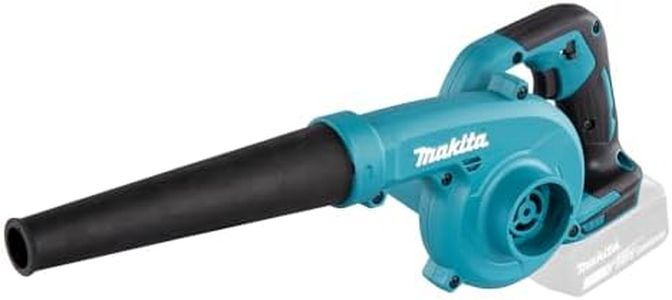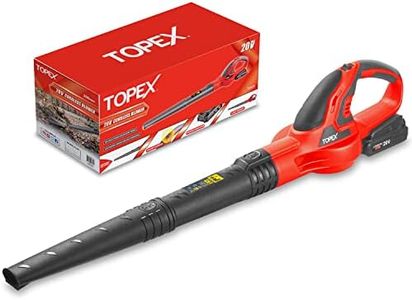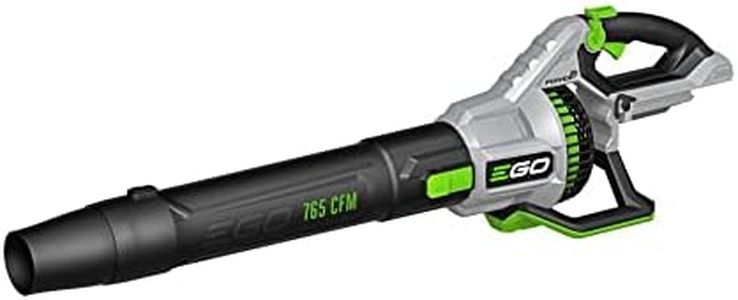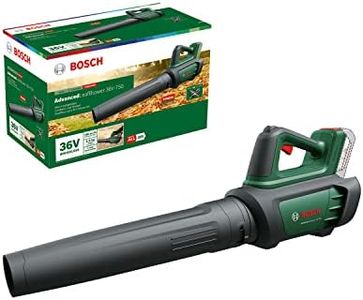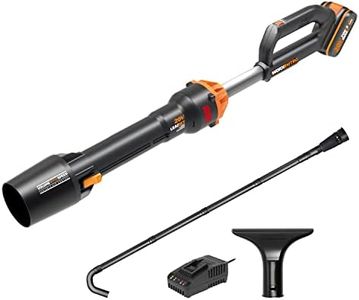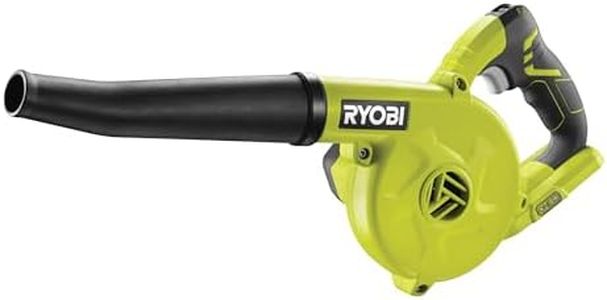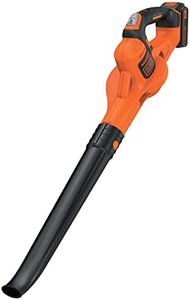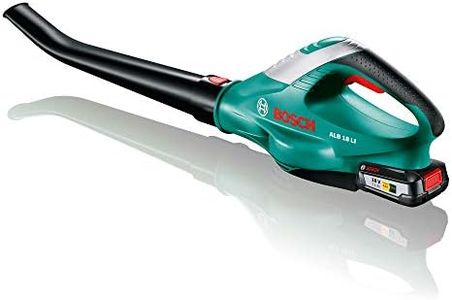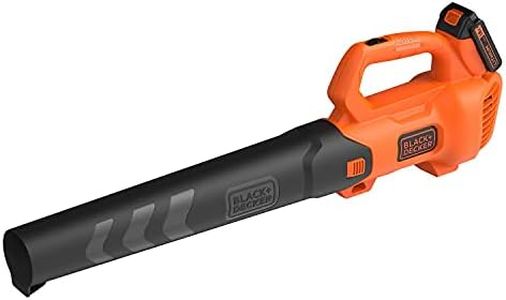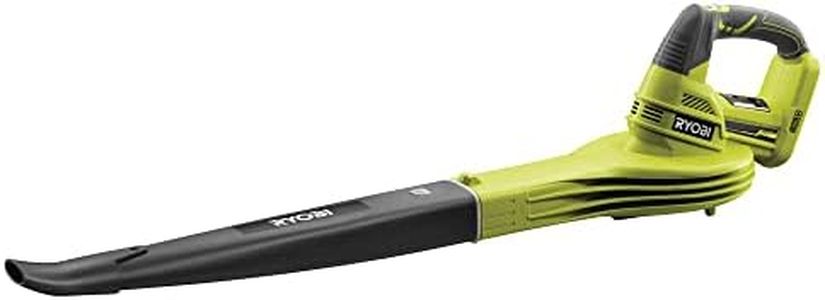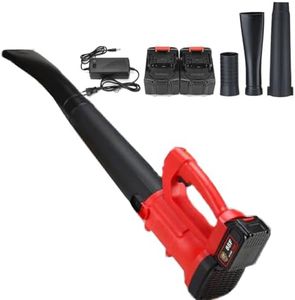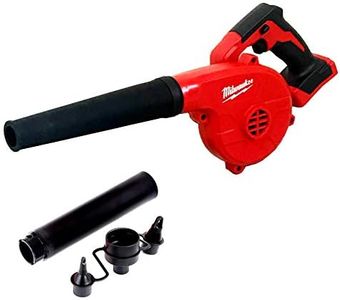We Use CookiesWe use cookies to enhance the security, performance,
functionality and for analytical and promotional activities. By continuing to browse this site you
are agreeing to our privacy policy
10 Best Battery Leaf Blowers
From leading brands and best sellers available on the web.By clicking on a link to a third party's website, log data is shared with that third party.
Buying Guide for the Best Battery Leaf Blowers
Choosing a battery-powered leaf blower can make keeping your yard neat much easier and quieter than using a gas model. The right blower for you should fit your typical outdoor tasks, whether that's clearing a small patio or managing large piles of leaves across a big yard. It's smart to think about the kind of debris you usually have, how much time you want to spend working, and how powerful of a blower you need. Comparing the main features across models will help you find one that handles your chores comfortably and efficiently.Battery Voltage (V)Battery voltage refers to the amount of power the blower's battery can deliver. Higher voltage usually means the machine can produce more airflow and is better for heavy-duty tasks, like clearing wet leaves or larger debris. Typical voltages range from about 18V for light jobs up to 80V for more demanding work. If your maintenance is light and mostly involves dry leaves or grass, a lower voltage blower can keep things tidy without being heavy. For big yards, stubborn debris, or thicker coverage, looking at higher voltages can help you get the job done faster.
Air Speed (CFM and MPH)Leaf blowers are often rated by air speed, measured in miles per hour (MPH), and the volume of air moved, measured in cubic feet per minute (CFM). MPH focuses on how quickly air comes out, while CFM measures how much air moves through the nozzle. For light work like cleaning porches or flower beds, lower numbers can be enough. Moderate to high numbers, especially in CFM, mean you can move large piles of leaves more easily. If you have a big yard or face a lot of leaves each fall, focusing on blowers with higher CFM and MPH ratings is a better bet.
Battery RuntimeRuntime tells you about how long the blower will keep running on a fully charged battery. It's an important factor if you have a lot of ground to cover. Shorter runtimes (around 15-20 minutes) are fine for quick, small cleanups, while longer runtimes (40-60 minutes or more) allow for working through big areas or heavy debris. Think about how long you typically need to work at once; if you often take breaks or work in short stints, a short runtime may not be a problem. For uninterrupted sessions or larger properties, prioritizing longer battery life will help you finish the job without stopping.
WeightWeight refers to how heavy the blower feels in your hands. Battery leaf blowers usually weigh less than gas models, but there is still some variation. Lighter units (around 4–6 lbs) are easier for longer periods or for users who prefer something easy to handle, especially when reaching or maneuvering. Heavier blowers often come with more power, but they can be tiring if you plan to use the tool for a long time. Consider your own strength and comfort level, and if you'll be using the blower overhead or for extended periods, look for a lighter option.
Noise LevelBattery-powered blowers are quieter than gas, but some models are still loud. Noise level is measured in decibels (dB); lower numbers mean quieter operation. If you live in a quiet neighborhood or want to avoid disturbing others (or yourself), look for blowers that advertise lower decibel ratings. For example, blowers in the 60 dB range are relatively quiet, while 80 dB and above might attract attention. Consider your local regulations and your own noise sensitivity when choosing.
Ergonomics and Handle DesignErgonomics pertains to how comfortable and easy the leaf blower is to use. This spec covers aspects like handle shape, grip cushioning, balance, and the layout of switches. If you plan to use the blower frequently or for extended sessions, a comfortable grip and well-balanced design can reduce fatigue and help prevent sore hands and wrists. Try handling different models if possible to see what feels best for you, especially if you have joint concerns or limited strength in your hands.
Battery Compatibility and Charging TimeSome brands use batteries that fit a variety of tools, so you might be able to swap one battery between your leaf blower, drill, or trimmer. This can be a huge convenience since you won’t have to buy extra batteries and chargers for each tool. Also, charging time can be a factor—models range from quick-charging batteries that are ready in less than an hour to those that take several hours. If you want to be able to work with minimal downtime, look for models with batteries that are compatible with your other tools and feature short charging times.

